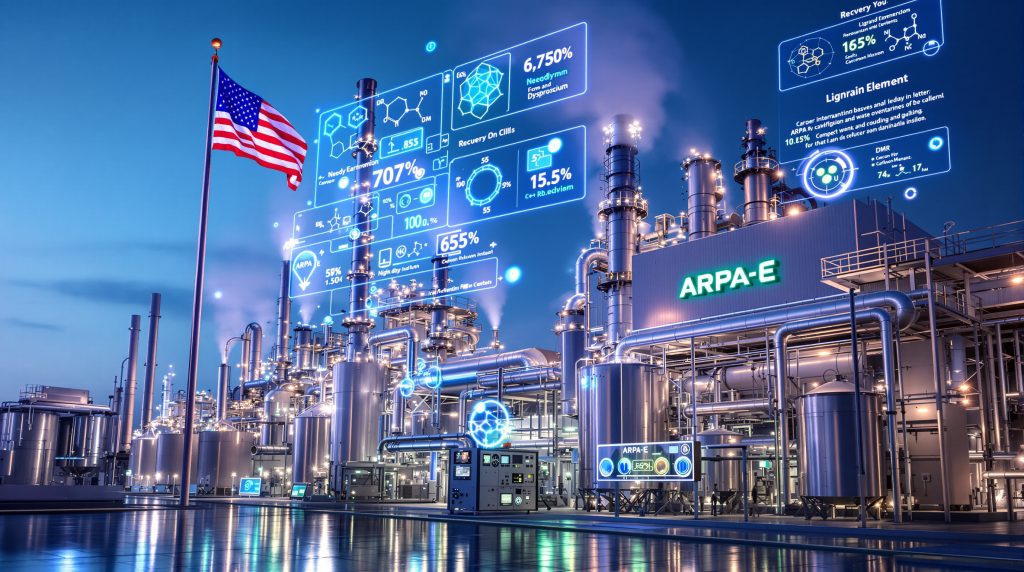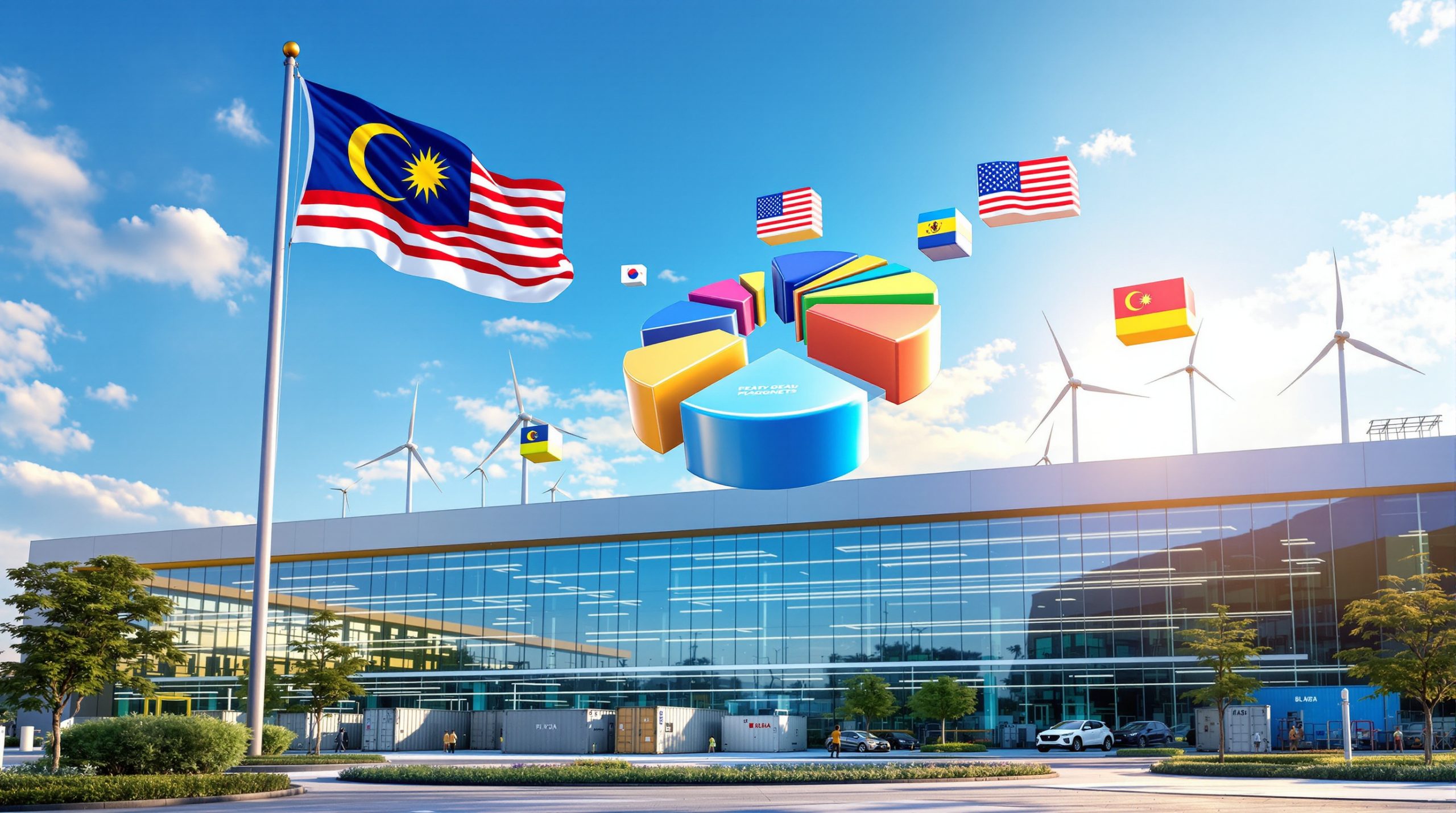America's Critical Mineral Recovery Revolution
The Advanced Research Projects Agency-Energy (ARPA-E) RECOVER program represents a transformative federal initiative designed to fundamentally reshape America's approach to critical mineral sourcing. Rather than depending exclusively on conventional mining operations, this groundbreaking program focuses on extracting valuable materials from previously overlooked waste streams, including industrial wastewater, municipal effluent, and mining byproducts.
The program aims to address several strategic objectives that could revolutionise domestic mineral supply chains. Federal agencies seek to replace significant portions of domestic ammonia supplies through recovery technologies while simultaneously eliminating critical dependencies on specific international sources. The initiative particularly emphasises developing scalable extraction methods for dilute aqueous solutions, creating robust domestic supply chains from unconventional resource streams that have historically been discarded as waste.
Phoenix Tailings has emerged as a significant player within this strategic framework through their innovative approach to mineral extraction. This Massachusetts-based technology company has developed what they term the CO2 GONE process, which focuses primarily on mining waste rather than wastewater streams. Their specialised methodology aligns perfectly with ARPA-E's broader resource recovery mission while addressing specific gaps in domestic processing capabilities.
Key Innovation Highlights:
• Carbon-negative extraction processes that actively sequester CO2 during operation
• Specialised focus on nickel and magnesium recovery from tailings materials
• Strategic federal funding support through multiple ARPA-E programs
• Zero-waste methodology that recycles both CO2 and ammonia throughout the process
Revolutionary Ligand-Based Separation Technology
Phoenix Tailings' breakthrough centres on sophisticated ligand chemistry, representing a significant advancement over conventional separation methods that typically require high concentrations and energy-intensive processing. This approach uses specially designed chemical compounds to selectively bind with target metals in complex, dilute mixtures where traditional methods struggle to achieve economic viability.
The technical process involves several integrated steps that work together to achieve unprecedented selectivity and efficiency. Custom molecules are engineered to bind specific metal ions through carefully controlled chemical interactions. These target metals form stable complexes with the designed ligands, creating conditions where metal-ligand complexes can be converted to gas phase for separation.
Finally, pure metal salts are separated through controlled condensation using fractional distillation techniques. The ARPA-E RECOVER program Phoenix Tailings collaboration has received significant funding from the U.S. Department of Energy to advance this technology.
Transformative Advantages Over Conventional Methods
Traditional rare earth separation relies heavily on solvent extraction processes requiring multiple stages, significant chemical inputs, and substantial energy consumption. Phoenix Tailings' ligand-based approach offers compelling advantages that could reshape the industry's economic fundamentals.
The efficiency improvements include substantially lower energy requirements compared to conventional methods and dramatically reduced chemical waste generation. The technology demonstrates scalability for low-grade resource streams previously considered uneconomical while remaining applicable to distributed processing facilities near urban centres.
Economic benefits extend beyond operational efficiency to include lower operational costs for dilute solutions and reduced dependency on imported separation chemicals. The approach enables enhanced recovery rates from waste streams while potentially supporting distributed processing facilities that reduce transportation costs and supply chain risks.
Strategic Importance of Waste Stream Mining
The United States currently imports over 90% of its rare earth separation capacity from China, creating significant supply chain vulnerabilities that extend far beyond economic considerations. The approach complements the broader mining industry evolution by developing domestic alternatives that circumvent the need for new mining operations while utilising existing waste streams.
Comparative Analysis of Resource Development Approaches
| Development Factor | Traditional Mining | Waste Stream Recovery |
|---|---|---|
| Environmental Impact | Extensive surface disturbance | Minimal additional footprint |
| Regulatory Timeline | 10-15 years typical | 2-5 years estimated |
| Capital Requirements | $500M-2B+ investment | $50M-200M range |
| Geographic Flexibility | Ore deposit dependent | Urban/industrial locations |
| Supply Chain Risk | Weather/political exposure | Distributed source model |
Urban Mining as Strategic Resource Development
The concept of urban mining transforms industrial waste streams into strategic resource hubs, offering compelling advantages over traditional extraction methods. This approach provides access to diverse resource streams including industrial wastewater from manufacturing operations, geothermal brines from energy production facilities, desalination concentrate from water treatment plants, mining effluent from existing operations, and municipal wastewater treatment byproducts.
The strategic value extends beyond resource availability to include reduced regulatory complexity, shorter development timelines, and enhanced supply chain resilience through geographic distribution of processing capabilities. Furthermore, these innovations align with mine reclamation innovation by transforming legacy waste streams into valuable resources.
Critical Minerals Recovery Potential
The ARPA-E RECOVER program Phoenix Tailings collaboration focuses on elements that combine high economic value with strategic importance to American manufacturing and defence capabilities. Understanding which materials can be effectively recovered helps clarify the program's potential impact on domestic supply chains.
Primary Target Elements
Rare Earth Elements constitute the highest-value recovery targets:
• Neodymium for permanent magnet applications
• Dysprosium for high-temperature magnetic systems
• Terbium for phosphors and advanced magnets
• Europium for lighting and display technologies
Critical Industrial Metals represent substantial market opportunities:
• Cobalt for advanced battery cathodes
• Lithium for energy storage systems
• Nickel for stainless steel and battery applications
• Magnesium for lightweight structural alloys
The lithium recovery component particularly supports the growing battery metals investment sector by providing domestic sources for energy storage applications.
Strategic Materials encompass broader industrial applications:
• Ammonia for fertilisers and chemical processes
• Platinum group metals for catalytic applications
• Indium for electronic components
• Gallium for semiconductor manufacturing
Recovery Potential Assessment
Current waste streams contain an estimated $62 billion worth of recoverable materials annually, yet less than 1% is currently captured through existing technologies. This massive underutilisation represents both a significant economic opportunity and a strategic vulnerability that innovative recovery technologies could address.
In addition, advanced extraction methods like direct lithium extraction are transforming how companies approach mineral recovery from unconventional sources.
Competitive Technology Landscape
The critical minerals recovery sector includes several innovative companies, each developing distinct technological approaches and targeting different market segments. Understanding competitive positioning helps clarify Phoenix Tailings' strategic advantages and market opportunities.
Technology Comparison Framework
| Company | Primary Method | Target Materials | Development Stage |
|---|---|---|---|
| Phoenix Tailings | Ligand distillation | Ni, Mg, REEs | Pilot/Commercial |
| Ucore Rare Metals | RapidSX platform | Sm, Gd, HREEs | Demonstration phase |
| Energy Fuels | Conventional SX | U, V, REEs | Commercial operation |
| MP Materials | Solvent extraction | LREEs | Commercial production |
Unique Competitive Advantages
Phoenix Tailings differentiates itself through several key technological and strategic factors that position the company uniquely within the competitive landscape. Their technical differentiation includes carbon-negative processing that actively sequesters CO2, applicability to extremely dilute solutions where competitors struggle, lower energy intensity than conventional separation methods, and modular, scalable system design enabling distributed deployment.
Market positioning advantages include focused waste stream valorisation rather than competing directly with traditional mining, complementary positioning to existing mining operations, distributed processing capability reducing transportation costs, and strong environmental sustainability emphasis aligning with regulatory trends. However, these innovations support mining decarbonisation benefits by reducing the environmental impact of mineral processing.
Economic Impact Analysis
Successful development of waste stream recovery technologies could create substantial economic opportunities across multiple sectors, extending far beyond the immediate value of recovered materials to encompass broader industrial and strategic benefits.
Market Opportunity Assessment
Direct Revenue Streams represent immediate commercial opportunities:
• Recovered metal sales: $15-25B annually domestic potential
• Processing service fees: $3-5B annually estimated
• Technology licencing: $500M-1B annually projected
• Equipment manufacturing: $2-4B annually market size
Indirect Economic Benefits extend throughout the industrial base:
• Reduced import dependency: $8-12B annually savings potential
• Manufacturing cost reductions: $5-8B annually estimated impact
• Environmental compliance savings: $1-2B annually avoided costs
• Job creation: 50,000-75,000 positions across the value chain
Investment Landscape Analysis
The critical minerals sector has attracted significant investment interest from both government and private sources, reflecting growing recognition of strategic importance and commercial potential.
Government funding programs provide substantial support including ARPA-E RECOVER program allocations, complementary ARPA-E MINER program funding, DOE Loan Program Office availability totalling $2.5B, and Defense Production Act allocations of $750M for critical minerals development.
Private investment trends demonstrate strong market confidence with venture capital investments reaching $2.1B during 2023-2024, strategic corporate partnerships totalling $1.8B in committed funding, public market valuations exceeding $15B+ for the sector, and infrastructure funds allocating $900M toward critical minerals projects. Furthermore, Phoenix Tailings has secured substantial funding to advance their innovative processing technologies.
Commercial Success Challenges
Despite promising early results, several technical and market challenges must be addressed before widespread commercial deployment of advanced recovery technologies becomes viable.
Technical Implementation Hurdles
Scale-Up Complexity represents the primary technical challenge:
• Laboratory success doesn't guarantee industrial viability across all conditions
• Heat and mass transfer optimisation required for large-scale operations
• Process control systems need substantial refinement for commercial deployment
• Equipment durability testing in harsh industrial environments remains incomplete
Economic Viability Factors require continued development:
• Ligand synthesis costs must decrease substantially for broad commercial application
• Energy consumption optimisation needed to compete with conventional methods
• Recovery rate improvements required to justify processing costs
• Competitive pricing versus conventional methods throughout market cycles
Regulatory and Market Development
Regulatory considerations encompass environmental permitting for new processing technologies, product quality standards for recovered materials in end-use applications, waste stream access rights and classification issues, and interstate transportation requirements for processed materials.
Market development needs include customer acceptance of recovered materials versus traditionally mined products, supply chain integration requirements with existing industrial processes, comprehensive quality assurance and certification programmes, and long-term contract development to support capital investment.
Integration with National Energy Security
The ARPA-E RECOVER program Phoenix Tailings initiative aligns with multiple federal programmes designed to enhance American energy and economic security through technological innovation and supply chain diversification.
Related federal programmes include National Defense Authorization Act provisions supporting critical mineral development, Infrastructure Investment and Jobs Act funding for advanced manufacturing, Inflation Reduction Act incentives for domestic production, and CHIPS and Science Act manufacturing support targeting strategic materials.
Supply Chain Resilience Development
Strategic objectives encompass reducing single-source dependencies through diversified supply chains, creating distributed processing capabilities to enhance resilience, developing domestic technical expertise in advanced separation technologies, and building redundant supply pathways to mitigate geopolitical risks.
Implementation Timeline Expectations:
• Pilot demonstrations: 2025-2027 development phase
• Commercial deployment: 2028-2030 scaling period
• Market maturity: 2030-2035 expansion phase
• Full supply chain integration: 2035+ optimisation period
Investment and Industry Monitoring Framework
Understanding key performance indicators and risk factors enables informed assessment of progress toward commercial viability and market impact.
Critical Performance Milestones
Technical Achievement Targets:
• Recovery rate achievements targeting >85% efficiency levels
• Energy consumption metrics achieving <50% conventional method requirements
• Purity levels attained meeting >99.5% specifications
• Process stability demonstrations maintaining >95% uptime performance
Commercial Development Indicators:
• Customer pilot programme launches demonstrating market acceptance
• Strategic partnership announcements expanding capabilities and market access
• Follow-on funding rounds supporting scaling operations
• Regulatory approval progress enabling commercial deployment
Risk Assessment and Mitigation
Technology risks include scale-up technical challenges that may prove more complex than anticipated, competitive technology emergence potentially offering superior alternatives, intellectual property disputes that could limit commercialisation, and process optimisation delays affecting timeline expectations.
Market risks encompass commodity price volatility affecting project economics, regulatory changes altering competitive positioning, customer adoption rates determining market penetration speed, and international trade policy shifts impacting strategic value.
Risk Mitigation Strategies:
• Diversified technology portfolio reducing single-point-of-failure risks
• Multiple market applications providing revenue diversification
• Strong intellectual property protection maintaining competitive advantages
• Government partnership maintenance ensuring policy support continuity
Disclaimer: This analysis involves forecasts, speculation, and projections about emerging technologies and markets. Actual results may differ materially from expectations due to technical, regulatory, competitive, and economic factors. Investment decisions should consider comprehensive due diligence and professional financial advice.
The ARPA-E RECOVER program Phoenix Tailings collaboration represents a significant step toward American critical mineral independence through innovative waste stream valorisation. Success will depend on overcoming technical scaling challenges, achieving economic viability, and navigating complex regulatory and market development requirements. For stakeholders monitoring this space, key indicators include technical milestone achievements, customer adoption progress, and integration with broader federal supply chain security initiatives.
Ready to Capitalise on America's Critical Mineral Revolution?
Discovery Alert's proprietary Discovery IQ model delivers instant notifications on significant ASX mineral discoveries, including companies developing innovative extraction technologies and critical mineral processing capabilities that align with global supply chain trends. Begin your 30-day free trial today at Discovery Alert and position yourself ahead of the market as these transformative technologies reshape the mining landscape.




